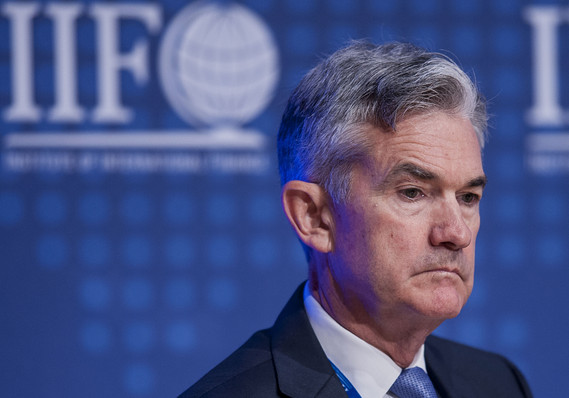 Bloomberg
Bloomberg Fed Chairman Jerome Powell will discuss his inflation outlook when he testifies to Congress for the first time on Feb. 28.
The hotter-than-expected consumer price data for January adds to a growing expectation among economists that the Federal Reserve will raise interest rates with four quarter-point moves this year, rather than the three they penciled in last December, economists said.
“I think this does cement the four rate hikes, given the inflation backdrop,” said Jeffrey Cleveland, chief economist at Payden &Rygel, an investment management firm based in Los Angeles.
U.S. consumer prices rose 0.5% in January, the biggest monthly increase since August 2012. Core CPI rose 0.3%.
Read: CPI surges stronger-than-forecast 0.5% in January
The hot inflation “helps the Fed tell their story that the Fed has to move up the funds rate in anticipation of higher inflation because inflation moves with a lag,” Cleveland said.
Investors have priced in an 80.3% chance of a quarter percentage point rate hike in March, up from 76.1% on Tuesday, according to the CME Group’s FedWatch tool, which is based off trading in futures contracts.
There’s a 23% chance of 4 hikes this year, compared to 17% on Tuesday.
Michael Pearce, senior U.S. economist at Capital Economics, said the increase in core CPI inflation “is a sign of things to come over the rest of the year.”
One temporary factors drop out of the annual comparison in the spring, core CPI inflation will be close to 2.5% and trend higher from there, he said in a note to clients.
“We expect that will force the Fed to raise rates a total of four times this year, beginning with a 25 basis point rise in interest rates at the March FOMC meeting,” Pearce added.
Economists at Barclays, Nomura, and Natwest are also in the four rate hike camp.
Robert Brusca, said the increase in inflation was “fairly widespread,” with 60% of the categories showing gains.
“A lot of Fed members will think this is a justification to continue, it is not going to put them on the sidelines,” Brusca said in an interview.
Only a deeply negative reaction in markets could put the Fed back in its heels, he said.
JIm O’Sullivan, chief U.S. economist at High Frequency Economics, agreed: “this data raise the already high likelihood that the Fed will be lifting rates again next month — unless turmoil in financial markets intensifies significantly,” he said.
The Dow Jones Industrial Average DJIA, +0.14% opened 100 points lower. Stock futures had indicated a higher opening but dropped sharply after the CPI data was released.

